The Wild West began with the English colonial settlements in the 17th century and ended in 1959 when the last remaining wild American territories became states. As of today, countless pictures of the period are still available, allowing for a look into one of humanity's most fascinating eras.
More than a part of America's history, the Wild West way-of-being is right at the center of what it means to be an American. This period had myths, stories of notable gunmen, heroic adventures, and violent cultural clashes. Often exaggerated by American folklore, these tales are impressive even when you stick to nothing but the facts.
Eleanor Dumont/California

The Wild West has stories of adventurous men, but we will be starting with the tale of a brave woman. Her name was Eleanor Dumont, but she became infamously known as 'Madame Moustache.' Coming from a mysterious Louisiana background, Eleanor moved to California to open not one, but two successful casinos.
A businesswoman first, Eleanor was also an enthusiastic gambler, and that habit proved costly for our hero. In 1872 she fell in love with a conman called Jack McKnight and was left with close to nothing. She wandered around California for the following years and was eventually found dead in Bodie, after one night of misjudged gambling.
Pearl Hart/Arizona
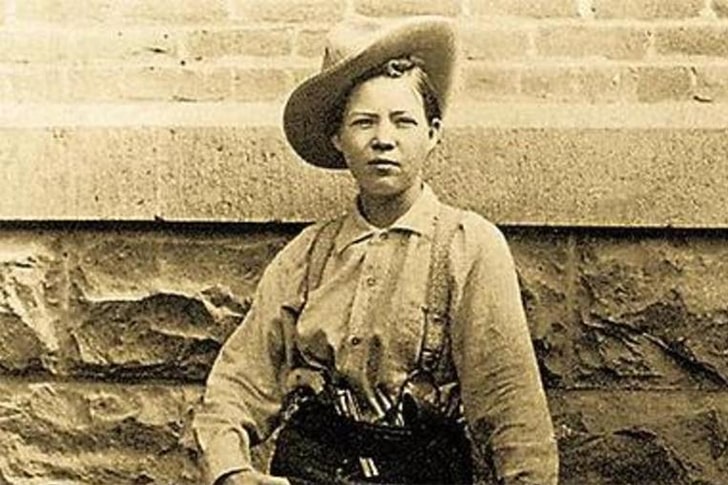
Fascinated for the Buffalo Bill's Wild West Show as a kid, Pearl Hart was associated with infamy in the Wild West. Raised as a religious and conservative young woman in Canada, she started a life of crime after falling in love with a scoundrel at the young age of 16, in the state of Ohio.
In 1898, Hart was going through severe financial problems when she decided to rob a stagecoach. This act of thievery would result in her imprisonment but was also in the origin of her notoriety. She became famous all across the country, as people were baffled by the fact she was a woman.
"Wild Bill" Hickok/Missouri
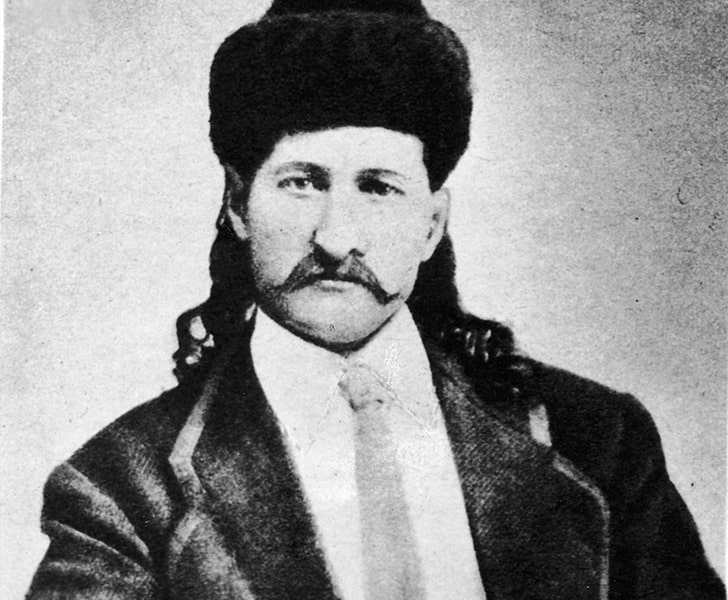
The notorious drover, gunfighter, and gambler "Wild Bill" Hickok was able to turn into a Wild West legend during his time. This was due to his exaggerated tales of bravery and ability with the pistol. One of the best-known outlaw men of the American Frontier period, "Wild Bill," died in 1876 during a poker game. Someone shot him from behind.
During his infamous life, Hickok kept busy working countless different jobs. He was a stagecoach driver, a sheriff, a poker player, and even a spy throughout the American Civil War. At this time in Missouri, Hickok joined "Buffalo Bill" Cody's troupe of actors, but he did not adapt well to the stage.
Wild West Settlers/Louisiana
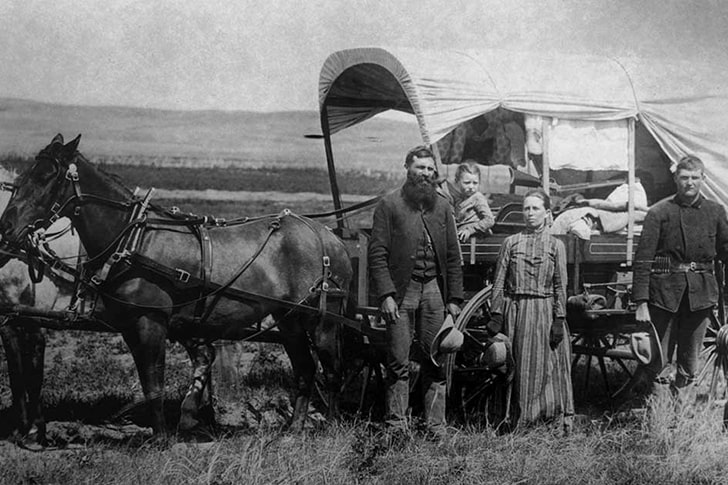
In 1803, President Thomas Jefferson purchased the territory of Louisiana from the French as a way of obtaining control over the lucrative Mississipi River. A wave of migration followed, with countless American families like the one you see above traveling West to settle in the region. At the time, Lousiana cost the U.S. only $15 million.
The Louisiana Purchase was vital for the later foundation of a vast federalist country. It proved particularly costly to the Native American communities living in the territory at the time. The U.S. mobilized over $2 billion to fight and expel the local tribes, reportedly affecting over 60,000 Native American families.
"Bronco" Charlie Miller/New York
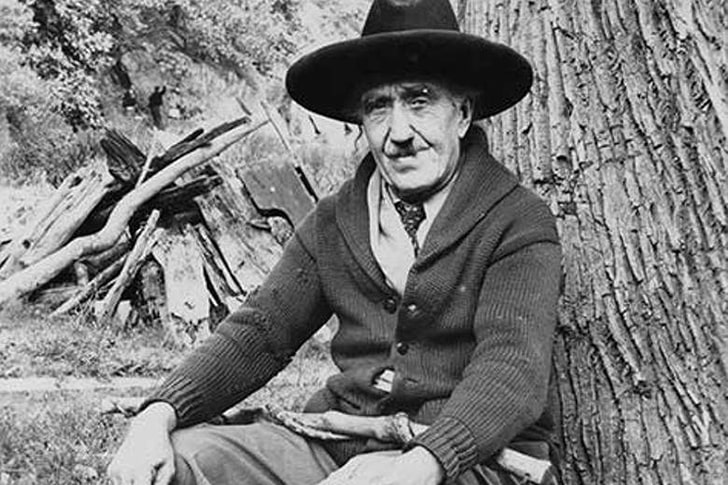
"Bronco" Charlie Miller's remarkable Wild West story started when he was only 11-years old. At the time, he joined the Pony Express, a quick delivery nation-wide mail service, as a horse-mounted rider. But Charlie's time with the Pony Express was nothing but the beginning of his adventure-filled life.
Later, Charlie worked for Teddy Rosevelt and acted in the Buffalo Bill's Wild West Show. He fell in love with a woman 20 years younger, worked on stage as knife-thrower, and fought for the Allies in Europe. Charlie eventually started preaching as a Converted Christian cowboy. He died from pneumonia in 1955, 105 years old at the time.
Louisa Earp/California
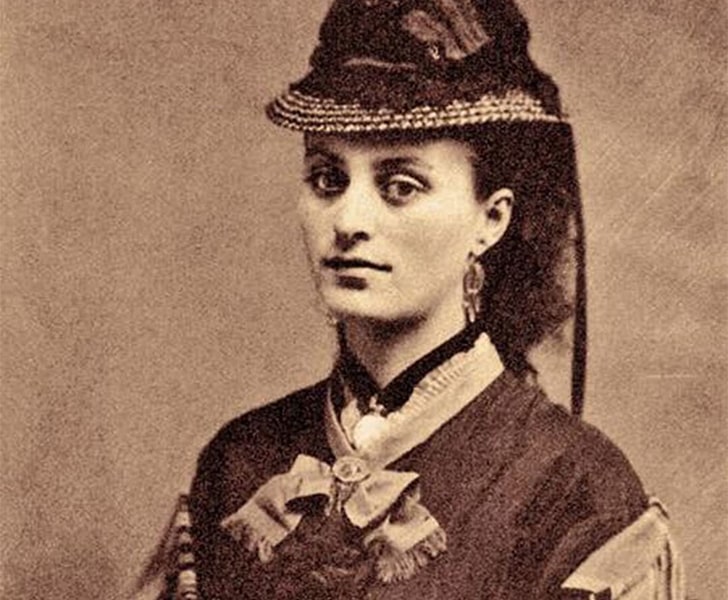
Unlike most men and women in our list, Louisa Houston Earp was not an adventurous traveler. She spent her entire life living in Southern California, and she is mainly known as the wife of Morgan Earp, Wyatt Earp's brother. Wyatt Earp was a notable Wild West lawman, gambler, casino-owner, and gunfighter.
Stranded in the same Long Beach home for most of her life, Louisa died before completing her 40th birthday. Louisa's cause of death is still not clear, with some people claiming she died of nephritis and diarrhea. Others say she succumbed to sciatic rheumatism and dropsy.
Wild West Cowboy/Monument Valley
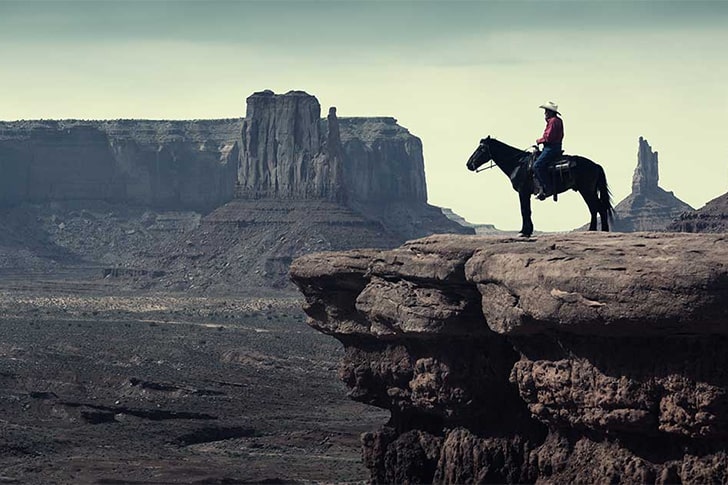
A colored picture of a Wild West-like cowboy in one of the cliffs of the Monument Valley, a region of the Colorado Plateau situated between the Utah/Arizona border. Visually compelling, this site appears in several major Hollywood movies. It's the perfect symbol of the Wild West's overwhelming sense of freedom.
The Monument Valley is located in the Navajo Nation Reservation territory and was used in many Western films, most notably by the American film director John Ford. Nowadays, it's the landscape we still best associate with the Wild West, mainly due to its recurrent use in popular culture.
The Dodge City Peace Commission/Kansas
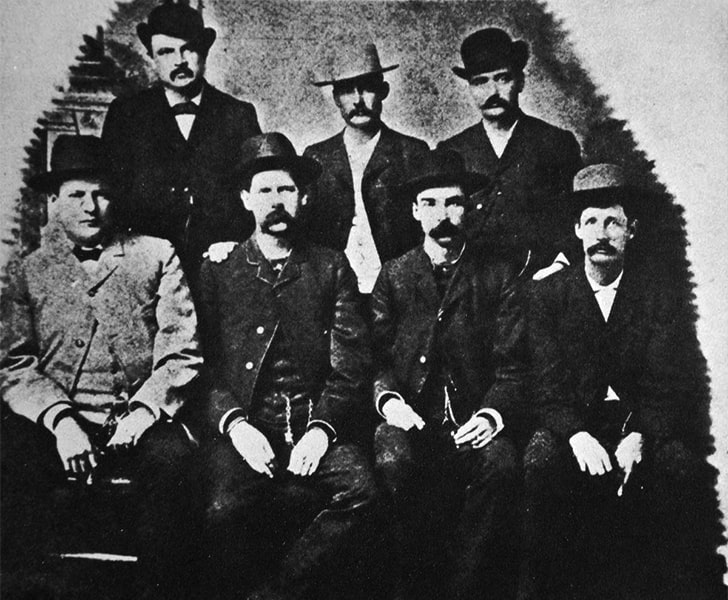
The line between good and bad guys is not as visible in real life as in the movies. But if there's one thing we know about the Dodge City Peace Commission is that these men were on the right side. Following a political crisis in the town, they joined forces to prevent what is now known as the "Dodge City War."
With the Dodge City mayor looking to expel the saloon-owner Luke Short, tensions escalated to the point of causing a city-wide conflict. Luckily, the Peace Commission - featuring notable men like Wyatt Earp and William Harris - was able to put an end to the 'war' without shedding any blood.
Fortune-Teller/Somewhere in the U.S.
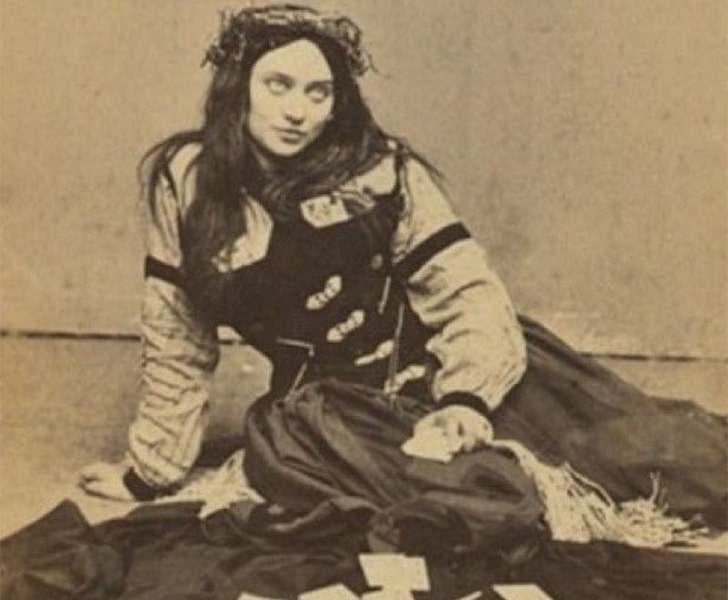
The United States was a cultural melting-pot in the 19th century. A place where there were countless exotic attractions from foreign countries and cultures. Amongst the most popular street-sellers were the fortune-tellers, usually represented by women of Romani origin (commonly known as gypsies).
Wild West fortune-tellers used tarot cards, palm readings, and crystal balls to deliver their predictions. In a historical period dominated by freedom, uncertainty, and constant danger, knowing what the future reserves was a reasonably powerful advantage. It helps to explain the fortune-tellers' popularity at the time.
Horse Buyers/Washington
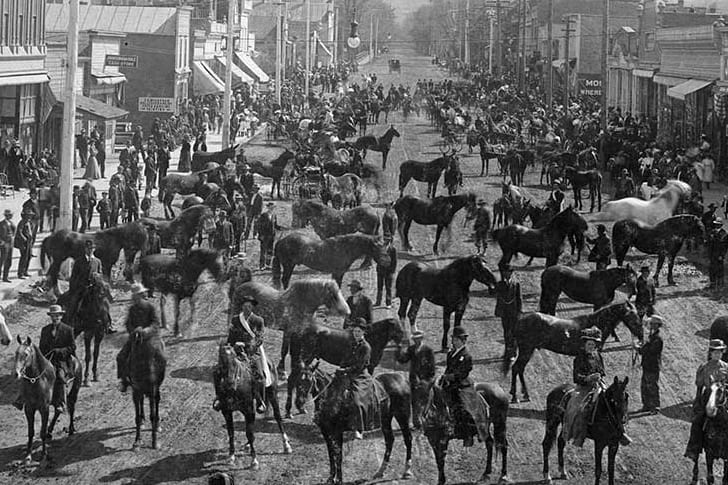
The Wild West would not have been possible without the horse, as the whole society ran on hooves. In the picture above, a horse show takes place in the smalltown of Waitsburg, Washington. Many potential buyers are seeking a close look at the for-sale displayed animals.
The nomad lifestyle, as well as the long-distance travel, were prevalent during the Wild West period. Our cowboys and adventurers weren't able to use the vehicles we have at our disposal today - the Ford was still not around - but they could always count on well-treated and fast horses for their endeavors.
American Miners/Northwestern U.S.
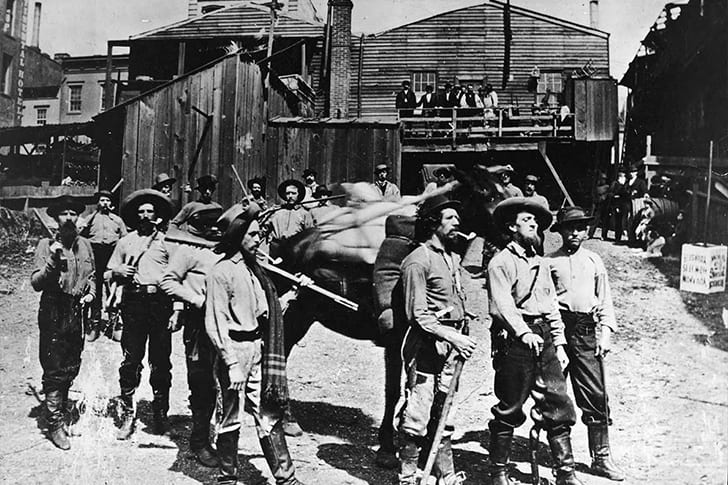
In the Wild West, nothing sparkled a wave of migration like a chase for gold. Countless miners rushed in search of a better life and of an easily-obtained fortune after discovering precious metals. But collecting gold was far from being an easy job, with many prospectors succumbing to dreadful working conditions and long-distance journeys.
The American Gold Rush happened in many different locations. Klondike Gold Rush is the best-known and the deadliest. This picture above was taken in 1967, somewhere in the Northwestern United States. It shows a group of hardworking gold-searching prospect miners.
Migrants' Caravan/Louisiana
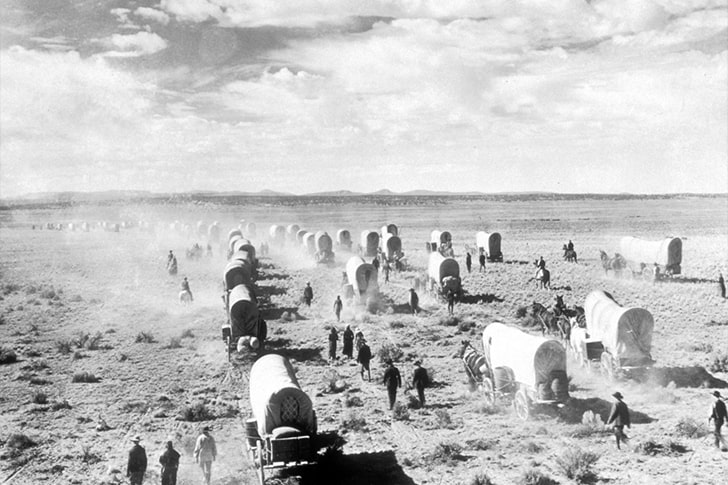
This remarkable picture is from1885, decades after the Louisiana Purchase. At the time, countless families were still traveling to the recently-acquired American land, often making the long journey in large groups. Making a dangerous trip alone was not an option for these adventurers. The road had robbers, outlaws, and hostile Native American tribes.
By sticking together in a big group, often alongside hundreds of other migrants, these American founders ensured a safer trip for their families and belongings. During the 19th century, the native European Creole and Sioux population of the Lousiana were Americans seeking land and better living conditions.
Susan Anderson/Colorado
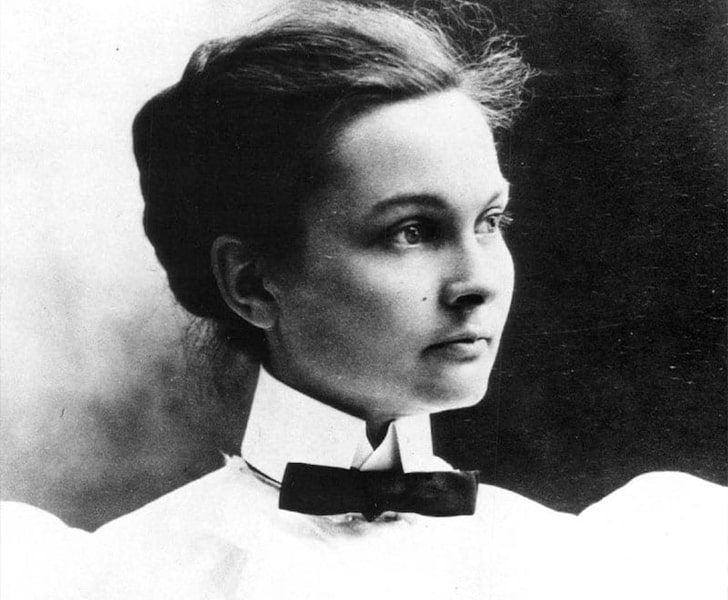
Susan Anderson is yet another remarkable Wild West female character. She is one of the first women ever to practice medicine professionally in the state of Colorado. Susan worked as a telegraphist before joining the University of Michigan and becoming a licensed physician.
Wild West stories have myths, and Susan has her tale of greater-than-life bravery. The story tells she saved a man's arm from amputation after another doctor claimed it had to be amputated. Susan was a humble woman throughout her life, usually paid with food and firewood. She never owned a car or house.
Wealthy Travellers/Sierra Nevada
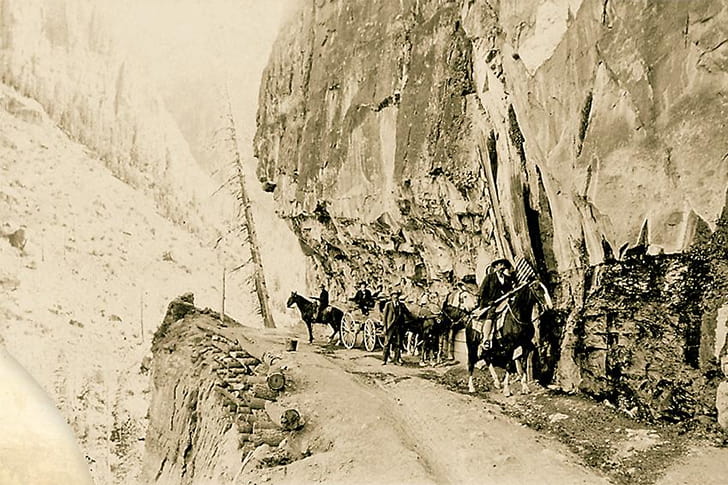
Making a long journey in the 19th century American Wild West was not easy for anyone. Not even for the wealthiest amongst men. Photographed on the cliff of a vertiginous mountain in the Sierra Nevada, these rich-looking individuals are trying to make it to the other side while protected by an armed guide.
Can you imagine how scary it must have been to travel in the U.S. back then? With thousands of miles of no man's land separating cities, migrants and adventurers encountered almost every danger you can possibly imagine. From robbers to butchering tribes, not forgetting the demanding meteorological conditions and wildlife.
Belle Starr/Arkansas
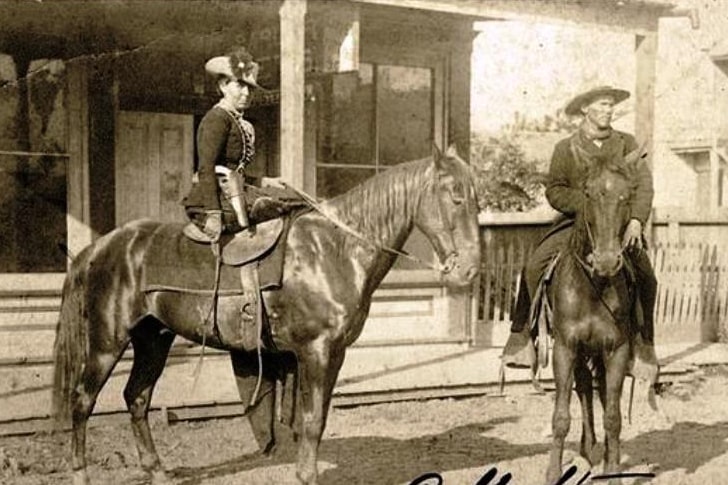
Belle Starr became known as the "Queen of the Oklahoma Outlaws" after spending four decades living around notable Wild West criminals such as Sam Starr and Jim Reed. She was arrested once, in 1883. Belle Starr was found guilty of horse theft and served nine months in a Detroit, Michigan jail.
In 1889, Belle Starr was found dead after being shot twice in Eufaula, Oklahoma. Her murder is still an unsolved case. It is celebrated by popular culture as one of Wild West's most fascinating mysteries. The prime suspects include Frank "Pistol Pete" Eaton - a rejected admirer, her husband, and one of her sons.
Navajo Riders/Arizona
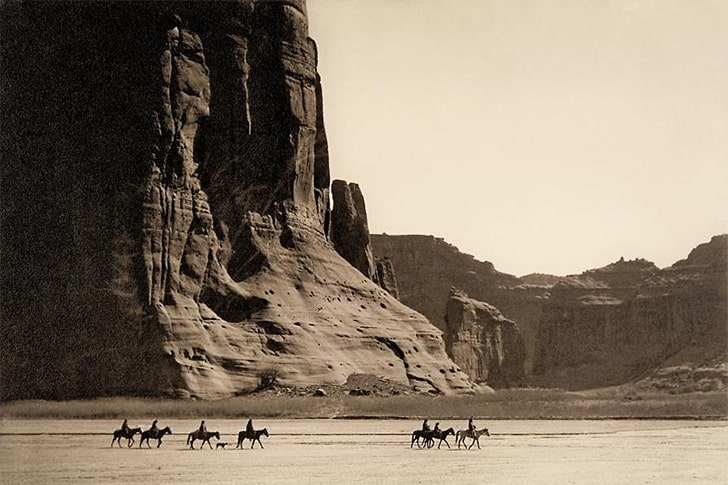
Down in northeastern Arizona, American photographer Edward S. Curtis immortalized the outstanding Canyon de Chelly in 1904. Now considered to be a national monument, this site was initially occupied by Native Americans, just like the riders you see in the picture above. The Navajo people lived in the Canyon de Chelly for over 5,000 years.
Edward S. Curtis' work focused on documenting the lives of the Native American population. He saw himself as an ethnologist first and a photographer second. Still, Curtis was able to deliver amazing results whenever handling a camera, as seen in this highly-praised historical photography.
Annie Oakley/Ohio
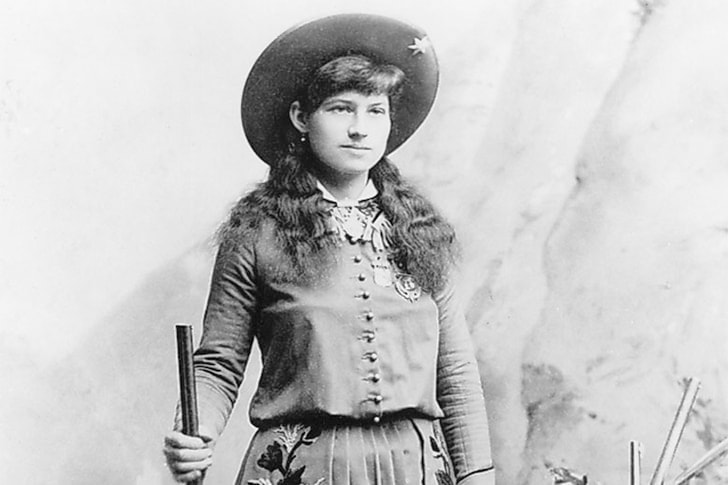
The Wild West times entail tales of brave and sharpshooting women. But Annie Oakley is easily the best-recognized female personality of the period. She achieved international fame for her uncanny ability to use a shotgun properly. She worked at the Buffalo Bill's Wild West Show for years and performed for royalty members and chiefs of state.
Born and raised in Ohio, Annie Oakley died in that same American state in 1926. She was 'lucky' enough to die of seniority, reaching the admirable age of 66. Her husband, the marksman, Frank E. Butler, was so shaken by her death that he stopped eating and died 18 days after.
Sacheen Littlefeather/Los Angeles
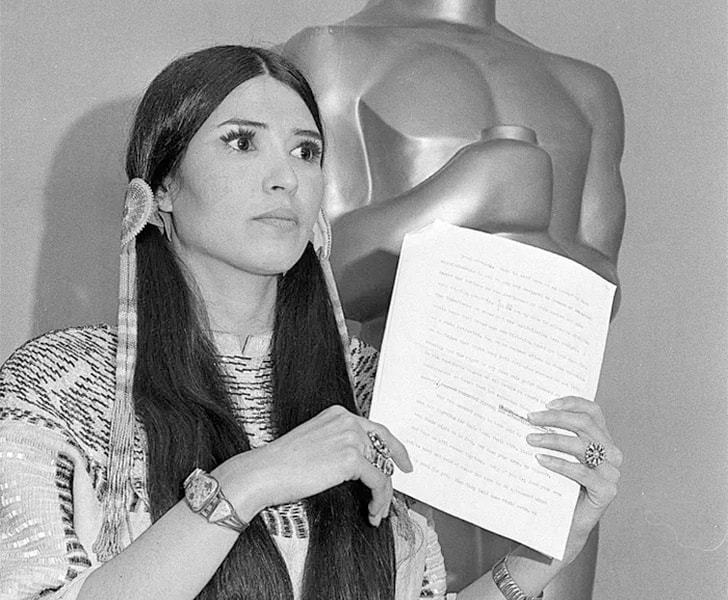
In 1973, during the 45th Academy Awards ceremony, best-actor winner Marlon Brando (the star of The Godfather) decided to decline his prize. He did this as a way of raising awareness of the discriminating and dishonest representation of the Native American people on the big screen.
To deliver Marlon's prepared speech, the Apache actress/activist Sacheen Littlefeather took the stage. The reaction of the attending crowd - a mix of boos and cheers - was a sign of the historically insensitive way Native Americans were treated, even during the 70s. Fortunately, the situation has changed in the U.S. for most Native American descendants. They now have the respect they deserve.
Laura Bullion/St. Louis
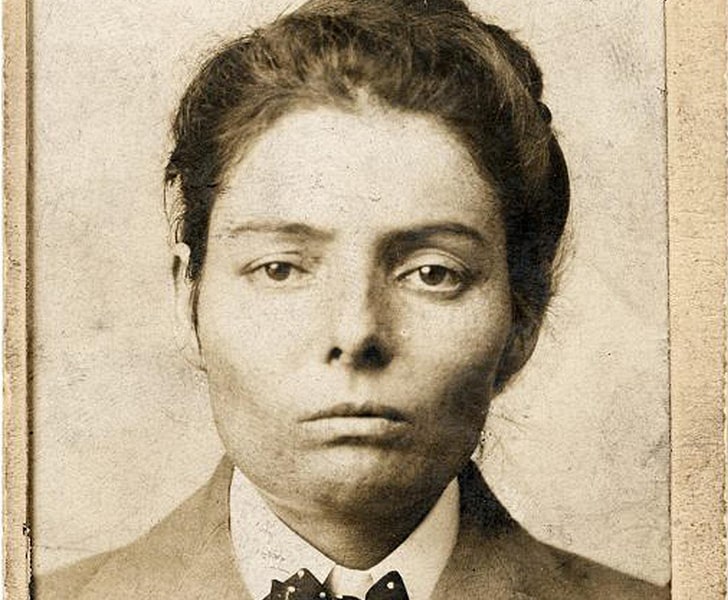
Popularized as a member of Butch Cassidy's infamous Wild Bunch gang, Laura Bullion is a renowned Old West outlaw. She is best known for her relationship with Ben "The Tall Texan" Fitzpatrick and her involvement in the Great Northern train robbery. Laura died of heart disease in 1961, at age 85.
The mugshot you see above was taken in 1893, following her arrest in St. Louis. At the time, she had approximately $8,500 worth of stolen banknotes. She was charged with forgery of banknotes' signatures and released three and a half years later. To perform heists, Laura liked to dress as a man.
Jesse James/Missouri
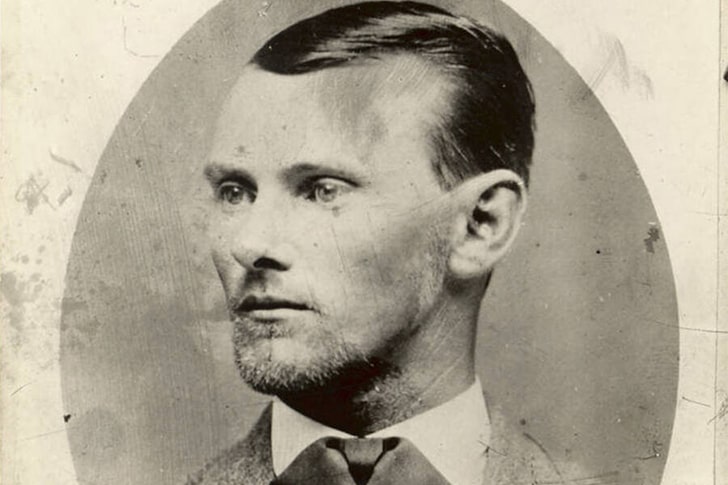
Commonly known as the 'Robin Hood' of the Wild West, the outlaw Jesse James was not as generous as most folk stories claim. There was plenty of plundering in this bank robber's life. James never shared his loot with the poor - despite being a successful and violent thief for close to 10 years.
Jesse James was the leader of the James-Younger gang, which included his brother, Frank James. In 1882 he was shot to death by Robert Ford, a young man who joined the group only to collect the police reward for his head. Wild times indeed!
Charley Nebo & Nicki Geni/Nebraska
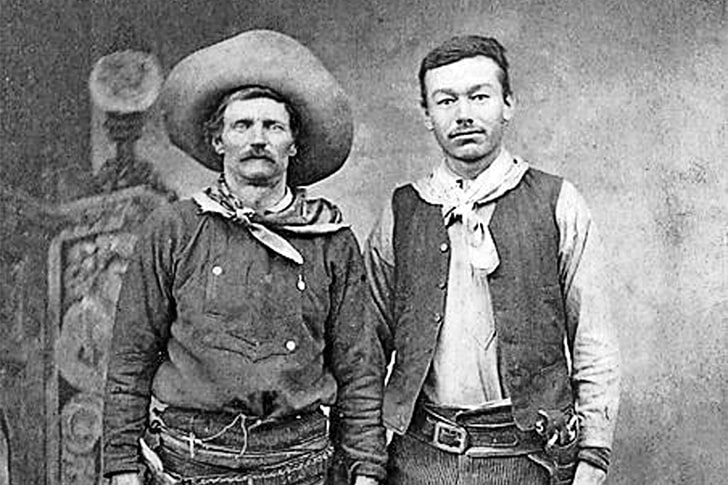
The Wild West has undeserving heroes (just like Jesse James). There are still forgotten heroes of the period, like Charley Nebo, the cowboy you see on the left. He is on a Nebraska ranch alongside fellow worker Nicki Geni. Charley was a soldier and Texas Ranger.
He fought on the Civil War and was left wounded after the Battle of Bridgeport. Charley then moved to the South to become a Texas Ranger. During his life, he worked mostly as a cowboy, gathering cattle for wealthy landowners. Later, Charlie became the right-hand man of rancher James Dahlman, the elected mayor of Omaha.
Sioux Girl in Ceremonial Dress/Somewhere in the U.S.
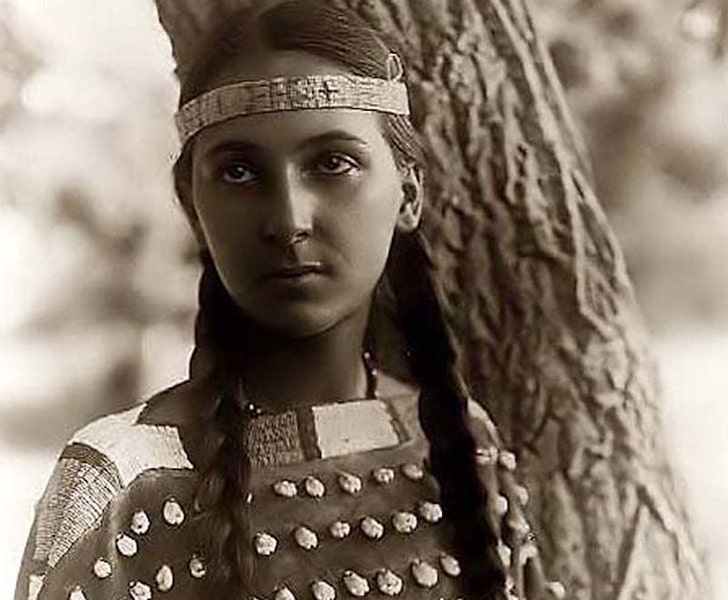
Sioux tribes lived around Lake Superior, a territory where you can currently find the states of Wisconsin and Minnesota. There were Sioux villagers all across the U.S. The young girl you see above has the traditional Sioux ceremonial garments, reserved for rituals and special occasions.
In the Sioux culture, men and women have pre-defined roles. The men work as hunters, while women produce clothing and take care of the house. The Sioux's language is called Dakota. Currently, only about 300 of the 20,000 Sioux descendants living in the U.S. can fluently speak Dakota.
Crow People/Montana

When the first European conquerors arrived in the unexplored territory of North America, the people of the Crow tribe were struggling to resist the attacks of the far-larger foreign armies. Later, a vision by a Crow boy called Plenty Coups convinced the tribes' chiefs it was good being friends with the opposing 'whites.'
The European-Americans were exploring the Crow people like most Native American tribes. But they were able to retain land around the Yellowstone River, which they still currently occupy. The Crow people have 12,000 active members and their community college in Montana, the Little Big Horn College.
Land Run Cowboy/Somewhere in the U.S.
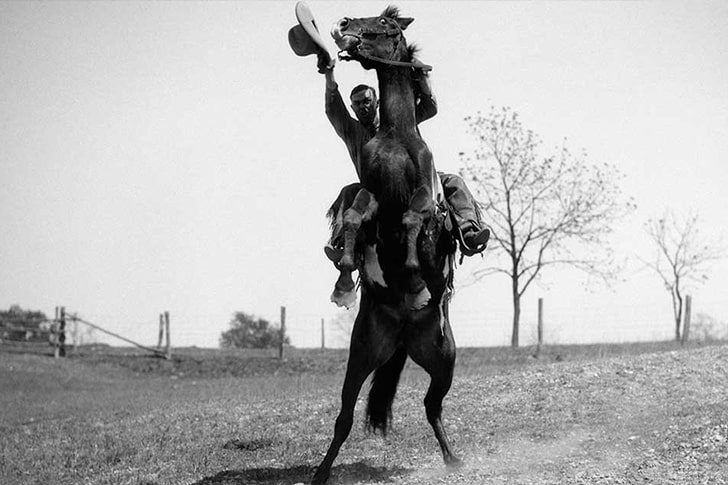
This perfectly-timed picture possibly shows a cowboy during one of Wild West's crazy land runs. A land run happened whenever the government issued previously restricted land for homesteading purposes. The catch? It usually followed a first-arrival rule. The first cowboy on the ground was the owner of the property.
These settlers needed to negotiate with the government first. But the first man on the scene was usually the one obtaining the most privileged territory. The Cherokee Strip Land Run, which took place in 1893, was the most significant land run ever registered. It helped set the basis for what would later become the state of Oklahoma.
Rose Dunn/Oklahoma
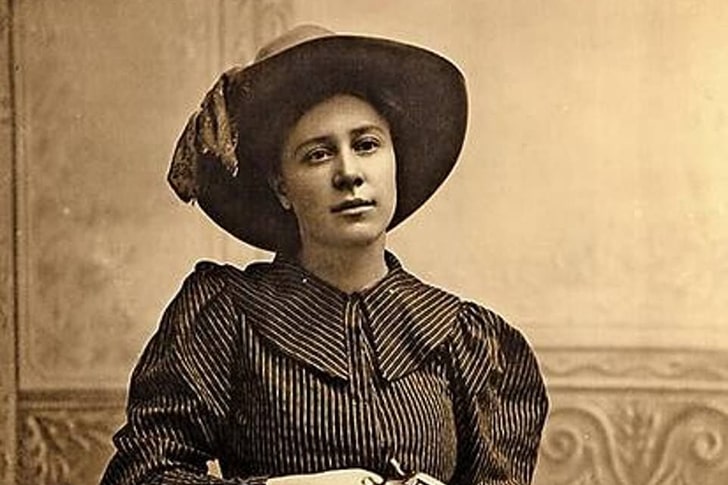
Commonly known as 'Rose of Cimarron,' Rose Dunn was a young woman coming from a low-income family background. She became notable in the Wild West, mainly due to her beautiful appearance. Rose fell in love with the outlaw George "Bittercreek" Newcomb. She then started running with the Wild Bunch gang, which was very protective of her.
A strong presence amongst men, Rose's run of crime ended suddenly after Newcomb's assassination around 1899. She later married a local politician, Charles Noble. After his death, she got together with a man called Richard Fleming. Rose died peacefully at the age of 77 in the rural community of Salkum, Washington.
